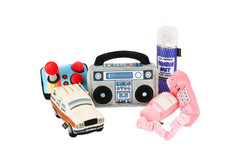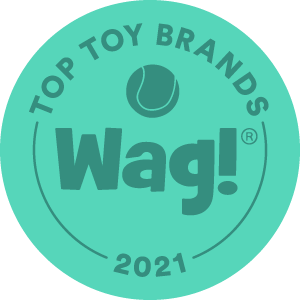Puppies are adorable bundles of energy. They can be an exciting addition to your family and, with training, can become loyal lifetime companions. Utilize training as the puppy grows so that they learn good habits at an early age. Contrary to popular opinion, it's possible to teach an old dog new tricks, but it's much simpler to train a puppy who has just begun to experience the world. The average dog begins to mature between one and three years of age, and reinforcing training is essential as it ages.
Continue reading to discover smart resources for training your puppy as they grow and develop.
1. Introducing Stimuli
The first few months of a puppy's life are critical to development.
Examples of stimuli include:
- Sight: It takes several weeks for a dog's vision to work well. It will take a puppy time to become accustomed to its environment. Begin by getting the pup comfortable in one setting and gradually introduce it to new places.
- Touch: The puppy has just been born, so feeling materials and being touched by humans is a new sensation.
- Sound: Try to make loud noises throughout the day to condition your dog to sound. The noises should be made while they're eating, sleeping or otherwise engaged, not while they are focused on you.
- Socialization: Animals learn from one another. By allowing the pup to interact with its mother and littermates, it can begin to understand canine behavior.
- Food: Treats can be used as a positive stimulus to reinforce good behavior.
Using resources like the Von Falconer method, you can ensure that you introduce the correct stimuli at the best age for development and growth.
2. Practicing Potty Training
Potty training is essential if you want to keep your home clean. Begin by creating a schedule for your puppy. Take them out every two hours during the day and before you go to sleep at night. Praise them for using the bathroom outdoors and give them a treat. Be sure to provide the treats while they are still outside to make a positive association with the act.
Remember to be patient. Even the best dogs have accidents inside on occasion. If you discover that the dog made a mess, clean it up thoroughly to ensure you've removed the odor. If you catch them in the act, shout for them to go outside and immediately take them out to finish.
3. Following Commands
Teaching your puppy basic commands will show them what you expect as the owner and help to reinforce good behavior. Positive reinforcement should be the basis for all training. Use treats, toys and encouragement as rewards and avoid punishment, like yelling. Keep training sessions around five to 10 minutes, so that the puppy does not begin to lose interest.
Begin by teaching them to come when you call their name. Reward them frequently as you practice, because training should be fun for you and your pet. Continue to practice with your pup, and as they master each command, add something new.
Commands that you should teach your puppy to master include:
- Come
- Sit
- Stay
- Laydown
Celebrate their successes, and continue to review commands after they have mastered them. Always end on a positive note rather than getting frustrated and quitting if your dog struggles with the training.
4. Walking on a Leash
Train your puppy to walk on a leash without pulling. Teaching a puppy proper walking skills makes exercising outside much simpler. Start by practicing inside and introducing the dog to their new leash, harness and collar. They must recognize these objects as something positive. Using treats, practice getting them to come towards you. When it's time to go outdoors, take training food with you to reward them when they listen on the walk.
If your puppy tries to pull, stand still until they come back to you — avoid yanking or pulling on the leash. A front-attaching harness can help to control your puppy and while avoiding putting pressure on their neck or back.
5. Socializing With Animals and People
Socialization means exposing your puppy to various sights, sounds, locations, people and animals. It's essential to socialize so your pet is well-adjusted, happy and confident. Typically socialization should begin between three and 14 weeks of age and continue throughout the animal's life. Keep in mind that socialization should always be a happy and stress-free occasion. Reward your pet frequently and allow them to withdraw if they become uncomfortable. Take baby steps, but continue to make progress as a lack of socialization can lead to behavioral problems.
Enlist the help of a trainer or enroll in puppy classes for extra support and guidance with training.
Training for the Future
Training should continue into adulthood. Use smart resources to train these five critical skills to your puppy. With any new animal, building skills takes time. Have patience and recognize that training a dog is challenging if they have not bonded to you. Allow your puppy to become accustomed to you, as it may take several days or weeks for it to adapt to its new environment.
About the Author:







